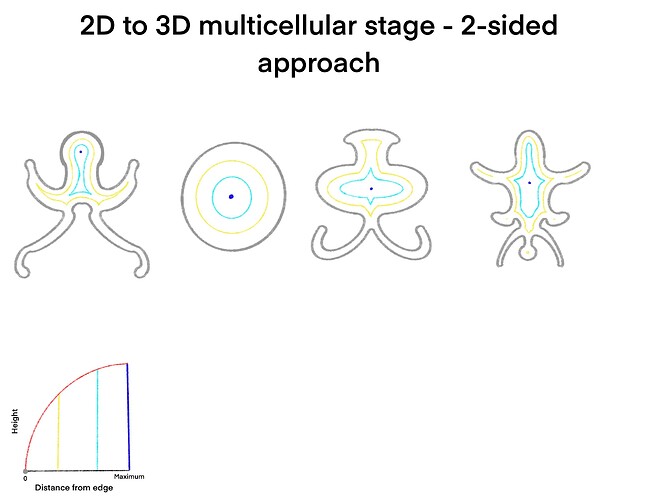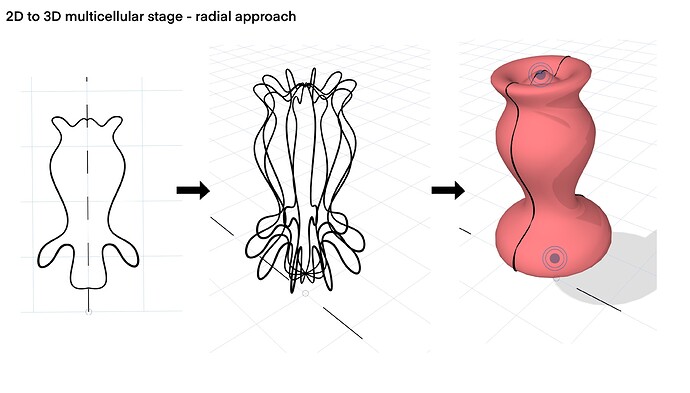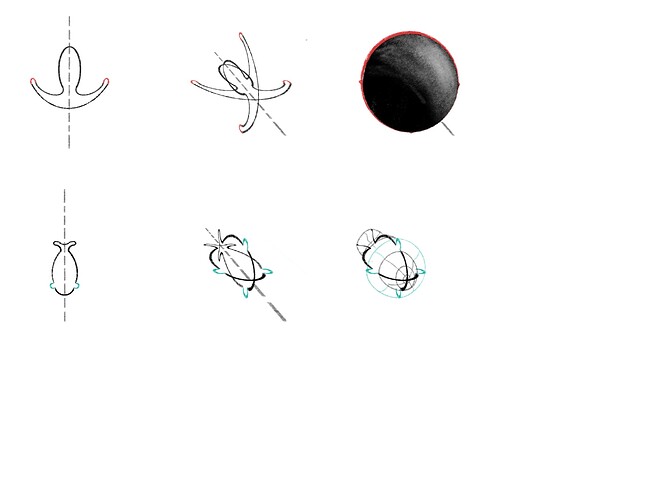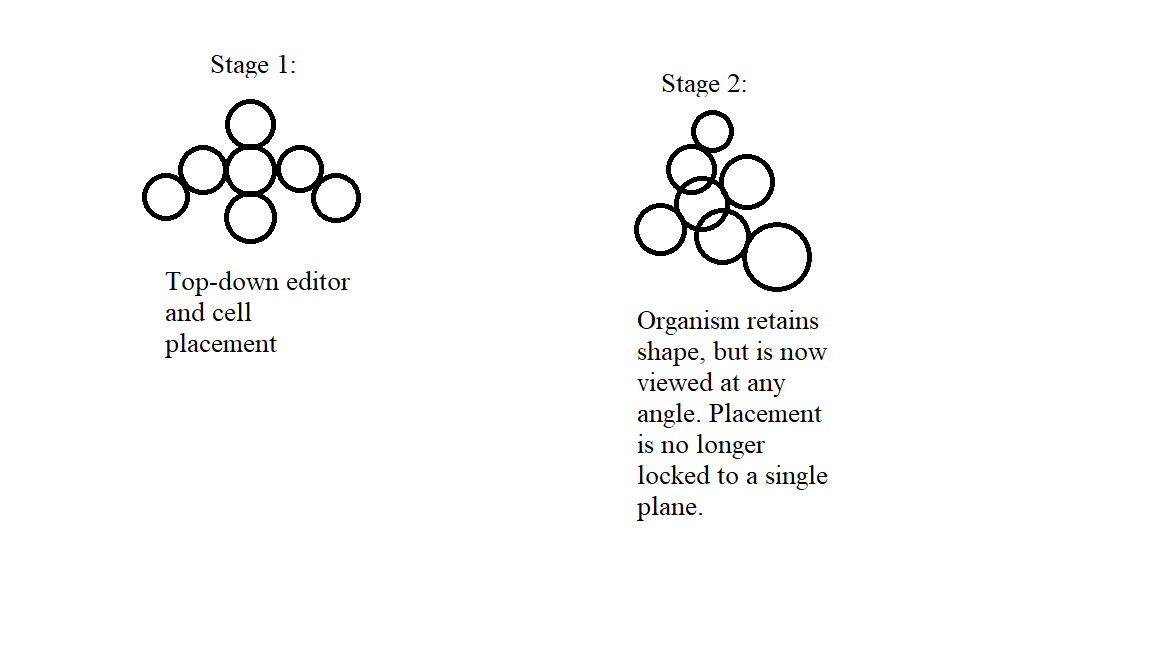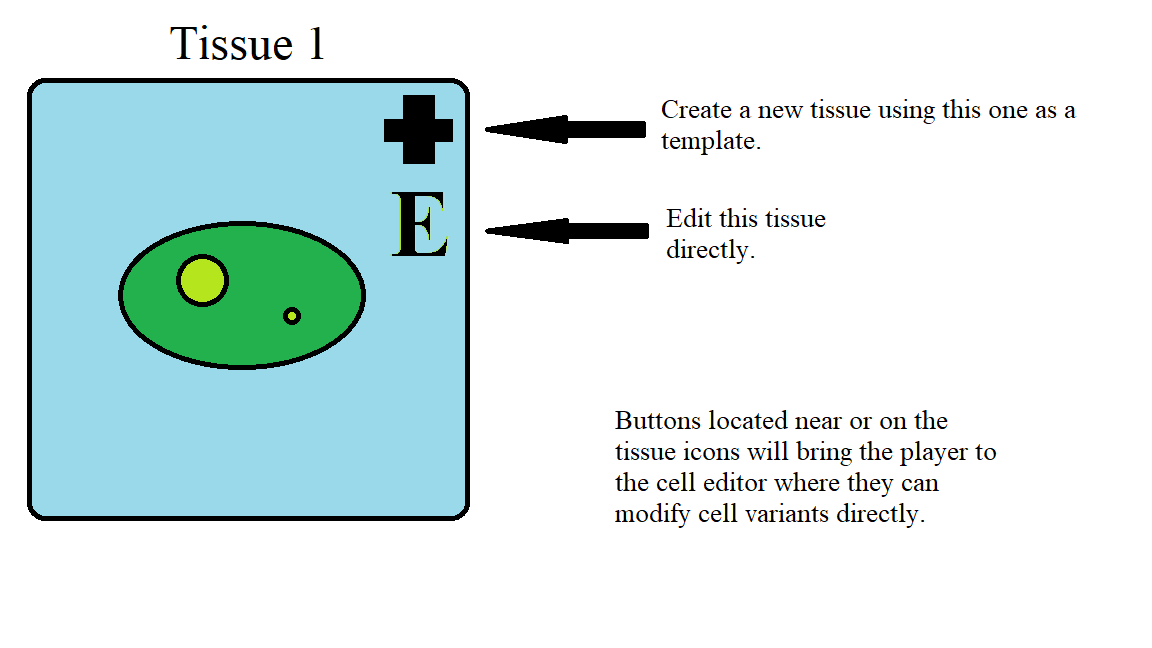Okay so at this point, I believe everyone has a rather loose but expansive idea on how the transition from a cellular colony to a true multicellular creature will play out. However, the exact process is still pretty ephemeral so I have decided to attempt to create a sort of rough draft on how I believe things aught to play out.
Beginning:
From what I recall from previous discussions, the general idea was that in order to achieve multicellularity, the player must hunt down other individuals of their species to bind with until they reach a certain number of cells in their colony. This is a rather simple proposition, but how will we handle it from there?
I have two relatively imperfect ideas on how to handle this.
- Upon reaching the requisite colony size, the player’s evolve button will become unlocked (assuming they have the necessary resources.), allowing them to evolve while still bound to other cells and bringing them to the next phase of gameplay.
The problem here is that we may have difficulty communicating this goal to the player when bound evolution was previously impossible. There is a real possibility that players could easily miss this event and unbind their colony to reproduce as normal.
- Upon reaching the requisite colony size, the player will unlock a new “junctions” upgrade to their binding agents part. This would require an upgrades system of sorts, as well as a conditional unlocking feature that would permanently grant access to a part once the condition is met. The newly upgraded binding agent would allow players to reproduce while bound in a colony, and bring them to multicelluarlity.
I feel better about this idea compared to the first, but it is far more dependent on alot of features we currently do not possess, and could potentially be rather convoluted to program as a result. There is also still a matter of conveying the conditional requirements to the player’s understanding to worry about.
One more problem I would like to bring up is how we plan to handle the initial amount of cells the player will possess once they reach the multicellular phase. Will it just be one cell? Or will we need to find a way to transfer the player’s current colony into the editor as their new body plan?
Phase 1; Body Plans:
Once the player has fulfilled the beginning condition, the next editor session they enter will have a new layout dedicated to the placement of entire cells instead of organelles. I feel that it is at this point we could introduce the more freeform placement of parts that is intended for later stages instead of the familiar grid that the player has been using until now. The reason for this is that the initial 2D perspective should serve as a great introduction for the player to steadily dip their toes into as the game transitions to the more complex organism editor. It will also be much easier for the system to utilize the dynamically shaped player cells in this manner, instead of trying to fit custom shapes and sizes into a noncustom grid.
At this point the player will have two editor tabs. The Cells and then Behavior tabs. Ideally I would prefer to keep the amount of tabs identical throughout all stages but I don’t know what a 3rd tab would be. The Cells tab is functionally similar to the parts tab, it is where you will select a cell to place onto your organism. This tab will initially feature the player’s initial cell until they create new variants by copying their cell and editing the copy. (Just like the tissue creation I proposed for aware.) The behavior tab will be unchanged, but could potentially include new features relating to an entire organism instead of singular cells.
The transition from this phase to the next could be tricky and there’s a few ways we could do it. I have proposed two potential methods.
-
Should the transition be based on the number of cells within the player’s body plan?
This might be the more appealing option as it makes sense that a multicellular creature will become more complex as it has more cells in it’s structure. It will also be familiar to the player at this point as it will mirror the requirement of possessing a certain amount of parts within their organism to progress.
-
Should the transition be based on the number of specialized varieties of cell within the player’s body plan?
This method would require the player to have somewhere around 3 specialized cells present within their body plan in order to progress. While not as appealing to me as the first option, this condition would ensure that players have a beginner’s understanding of cell specialization which will become important in the later aware stage.
Edit: I now realize that this would basically be covered by the later requirement for a neural cell.
Phase 2; The 3D Perspective
After the player has reached the previous condition and reproduced, the next editor session will now be in full 3D perspective, allowing the player to pan over, under, and fully around their organism. Nothing in particular will change aside from the navigation of the camera, as well as the ability to place parts on the top and bottom of your organism. It is at this point that the player has effectively become a fully fledged multicellular organism.
From here, the next condition will be a transition from multicellular to aware which is most likely to include the development of a nervous system. We are going to need to think about how we will classify a cell as a nerve cell in particular, as well as how the player’s positioning of such should be detected or matter.
For now, I would like to see what others think about this general idea.
